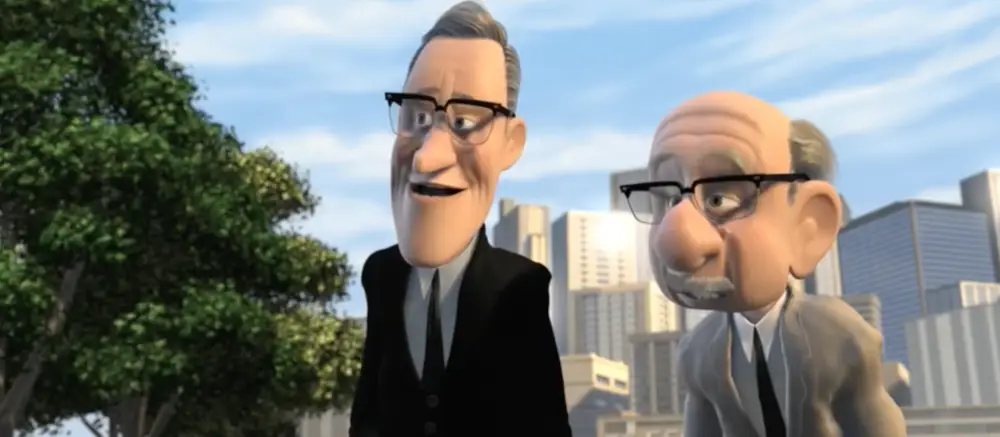Animation Tips for Beginners & Beyond
In this blog, we will take a closer look at animation tips and tricks to master if you’re looking to delve deep into the world of animation.
As with any creative process, mastering animation takes time and commitment. The good news is that there are a variety of animation secrets that can encourage expedition of enhancement of your skills and technique. We hope that by simply reading this blog post, you will save hours of time and frustration. You’re going to keep reading now, right?
The 12 Principles of Animation
Many animators are quick to label the teachings known as the 12 Principles of Animation as the ‘Animation Bible.’ The list has served as a right hand to animators since the 1930s when early animation such as Rotoscoping was highly prominent. The 12 principles were outlined by veteran animators and two of Disney’s Nine Old Men, Ollie Johnston, and Frank Thomas, in their 1981 book The Illusion of Life: Disney Animation.
While technology has evolved with new and innovative methods being integrated into animation, the principles remain a staple and comprehensive guide to the basics of animation. They are often a great launching point of reference to start and build your foundational knowledge. As Frank and Ollie say in their cameo at the end of The Incredibles, “There’s no school like the old school!”.

1. Squash and stretch
Animation tip number 1 is squash ans stretch. This principle is one of the most important of the 12 animation techniques since it gives animated objects and characters the illusion of weight, mass, gravity, and flexibility. To get the impression, think about how a rubber ball may react when tossed into the air: the ball stretches when it travels up and down and squishes when it hits the ground.
When applying the squash and stretch principle, it is of utmost importance to ensure that the object’s volume is consistent. It’s simple: the more realism you apply, the more realistic the animation. When you squash something, it gets wider as it is compressed down and pushed outwards. When you stretch something, it gets thinner and longer.
2. Anticipation
Again, realism is key here. Anticipation simply helps prepare the audience for what will happen next – particularly a major action. In preparation for this, an animator will include more minor build-up actions to prepare the audience for what is to come.
For example, if a character were to throw a ball, it wouldn’t be possible without extending their arm backward. Likewise, it would be impossible for a character to jump without bending their knees first. Animating without elements of anticipation may inspire cumbersomeness in your motion, causing it to appear lifeless.
3. Staging
Here, you should use motion to draw attention to what is important within the scene to the watcher’s eye. Every other background object must have motion kept to a minimum. Otherwise, you are at risk of distracting from the main action. This principle also captures the essence that every action of a character must display clear intention, for example, conveying their feelings or emotions.
This can also be applied to camera angles focussing solely on where the audience should be focusing their eye.
4. Straight-ahead action and pose-to-pose
The above animation tip refers to the two kinds of animation sequences you can use to handle the drawing and craft of the storyline. The two approaches can be used in isolation. However, many animators collaborate with them for maximum effect.
- Straight ahead action: the animation is drawn frame-by-frame from beginning to end. This technique gives realistic movement that remains fluid. This technique is precise and often time-consuming but can create a delicate effect.
- Pose to pose technique: the bread of the sandwich is drawn, that being the beginning and end. The key frames from the filler middle section are filled in for foundational purposes, and the rest of the transitional poses are completed after the fact. This technique effectively controls a sequence, allowing for the build-up of dramatic effect of the motion over abiding by realism.
5. Follow through and overlapping action
This animation tip is a principle that be most easily applicable to character-based motion
Nothing stops all at once. The overlapping action concept denotes that if your character is running within the sequence, the limbs, head, and body will all be moving at different rates.
Subsequently, upon stopping, certain areas of the body will likely continue to move for a few frames before coming to a resting point (i.e., a character’s hair that had been moving from the force of the air while running). This is usually described as a follow-through.
It is important to remember minor details such as these to convey the most realistic flow possible.
You can find out more about this concept in our feature on Walking Animation.
6. Slow in and slow out
Creativebloq.com likens this this step to how a car starts and stops. It begins slowly as it gains momentum and eventually speeds up. The reverse happens as the car brakes. This concept can be achieved in your animation at the beginning and end of the phase of action. Animators illude to realistic motion by drawing more frames at the beginning and end of the action and less frames in the middle.
7. Arc
Ever fall asleep in your physics class at school? Me too, don’t worry. Unfortunately, it needs applying here folks.
In animation, you’ll find that many objects follow an arc while in motion. It is essential that your animations always reflect the arc. With Isaac Newton in mind, if you were animating the falling of an apple from a tree, it must follow the natural cyclical arc movement as stated by the laws of gravity acting upon it. Remember: Bodily movements and objects being dropped or thrown are rare to act in an entirely straight line.
8. Secondary action
These actions function as the supporting actors of the main action occurring within the scene to add more dimension. This could be showcased in facial expressions or movement in hair and clothes as the character walks. As discussed in the Staging principle, it is important that the viewer is not distracted from the main action here. Secondary actions could simply add depth to characters and shed a little light on their personalities.
9. Timing
This animation tip sounds obvious, right?
It is important to apply what we know about our own concept of time in the real world to our animation to maintain a sense of realism developed by following the other principles.
Moving an object or character at a different pace to how it would occur in the real world will automatically impede your efforts to create an animation that is believable. Correct timing is also beneficial since it allows for control of other elements, such as reactions and moods of characters.
Remember, all animation is different. If you are creating an otherworldly sequence, timing can be an area you can get really creative. Whatever you do, remain consistent at all costs.
10. Exaggeration
Now I know we have been harping on about being as realistic as possible. But (apologies for the controversy), it’s a little obvious that too much realism can cause problems for animation. We don’t want the audience to tune out because your motions are static and monotonous.
Combat this issue by interspersing subtle exaggerations to convey dynamic elements to the motions. By pushing the animations only slightly further than human possibility, your animation is sure to inspire and engage the viewer.
If you want your video that realistic, why animate in the first place?
11. Solid drawing
Don’t worry if you’re drawing skills aren’t quite up to scratch. To nail this (and all other) principles, you may consider outsourcing your project work to professionals.
Johnston & Thomas insist that there are key elements to drawing animation, such as: capturing form and anatomy, weight and volume, lights and shadows, as well as being able to draw in a three-dimensional space (if that’s the style you’re going for).
12. Appeal
Of course, the animation should be striving to bring joy to the audience. If this isn’t a principle you can get on board with, then perhaps you have wasted your time reading this blog.
The characters, objects, and the world in which they reside must be easily accessible to engage the viewer. Avoid over-complex design and flat characters. Having a storyline that packs a punch is the most important element to this step.
Wrapping Up
Well, there you go! The 12 animation principles as coined by our old friends Ollie Johnston and Frank Thomas. Disney is a front-runner in many aspects of animation evolution. This list of key elements to creating an animation that will pop is a toolkit as precious as Pixie Dust. There are many other aspects involved in developing cutting-edge animation, but beginning with the above animation tips will put you in good stead to make a sufficient start.



